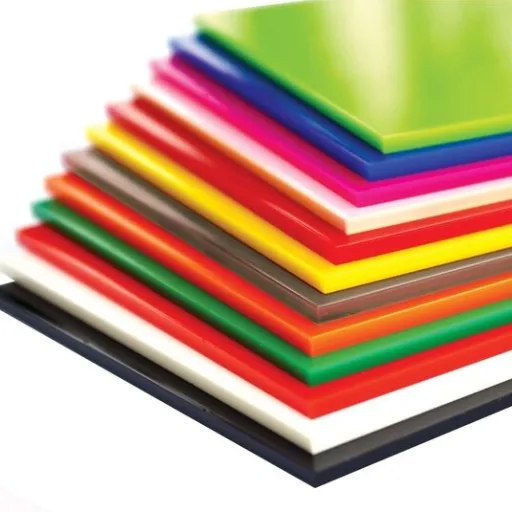The right material selection is critical since it affects performance, cost, and durability. For years, rubber has been a quintessential choice for multiple applications, but there is now an alternative: thermoplastic elastomer (TPE). This new material incorporates rubber’s elasticity and the ease of processing thermoplastics. However, how does TPE measure up compared to conventional rubber? In this article, we outline the primary differences, pros, and cons of the various options available to assist in choosing the best-suited material. If you are tuning a manufacturing process or designing a product, knowing how TPE stacks up against conventional rubber will give you an edge in today’s competitive atmosphere.
What is TPE, and How Does it compare to Traditional Rubber?
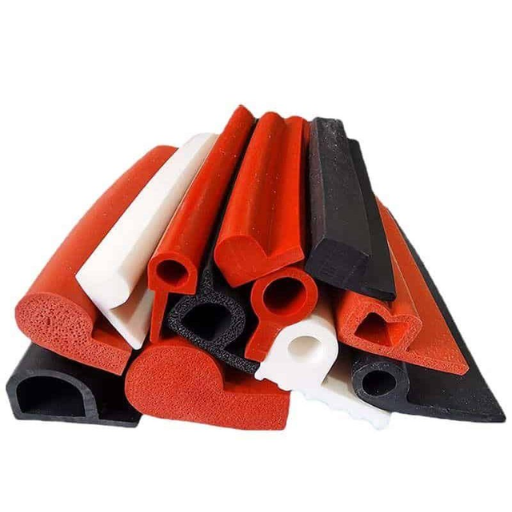
Thermoplastic elastomers (TPE) are a material group that has the ease of processing associated with plastics and possess rubber-like elasticity. Unlike conventional rubber, where vulcanization is needed to reach its final form, TPE can undergo eternal melting, shaping, and remolding. This quality makes TPE flexible for manufacturing. Furthermore, TPE is known to have even better resistance to environmental elements like UV radiation, chemicals, and temperature changes. While conventional rubber is more durable in highly demanding applications, TPE has clear cost efficiency, renewability, and manufacturability advantages. These traits make TPE perfect for industries that require flexible and adaptable material solutions.
Defining TPE and Its Properties
Thermoplastic elastomers (TPE) are advanced polymers that blend rubber-like elasticity with thermoplastic processability. Their dual-nature structure is derived from their molecular structure’s hard thermoplastic and soft elastomeric segments. The complex domains impart mechanical strength and thermal stability, while the soft ones add flexibility and resilience.
TPE materials demonstrate essential features such as high elasticity, excellent impact resistance, and multi-functional temperature performance. Other critical features include being stored in multiple hardness categories as gauged by the Shore durometer, from softer, more pliable forms to more rigid and more complicated forms. In addition, thermoplastic elastomers demonstrate resistance to permanent deformation during repeated cycles of mechanical distortion, followed by restoring the original shape, also known as elastic recovery. In addition, they can withstand harsh environmental factors such as extreme temperatures and UV radiation.
Different TPE types are available to suit particular industrial needs, such as in automotive, consumer goods, medical devices, and electronics, including Styrenic Block Copolymers TPE-S, Thermoplastic Polyolefins TPE-O, Thermoplastic Polyurethanes TPE-U, and Copolyester Elastomers TPE-E. The high degree of customization ensures optimal application performance, requiring durability, flexibility, and compliance with shifting regulatory guidelines.
Key Differences Between TPE and Traditional Rubber
Thermoplastic Elastomers (TPEs) exhibit markedly different properties from traditional rubber in their materials, processes, and applications. One distinguishing factor is their molecular composition. TPEs have a physically cross-linked structure that can be melted and reformed numerous times. This attribute enables easy manufacturing through processes like injection molding or extrusion and increases recyclability. On the other hand, traditional rubber, a thermoset material, undergoes chemical cross-linking during vulcanization. This makes it non-reversible after molding, like the vulcanized rubber chain set.
Regarding performance, TPEs have flexural strength and lower density than oils and solvents. Unlike traditional rubber, TPEs have the advantage of tailoring varying hardness levels and specialty additives to meet designated standards, enhancing the material’s design across various applications. Cost efficiency also separates the two as TPEs eliminate post-curing steps that streamline production, reduce lead time and energy consumption, and provide economic advantages. These changes are beneficial from an environmental standpoint as TPEs allow for material recycling, which supports the global push for sustainability.
Applications of TPE vs. Traditional Rubber
Both thermoplastic elastomers (TPEs) and conventional rubbers have wide applications across multiple industries, albeit separated by unique advantages and limitations. TPEs have substantial applications in the automotive industry, providing flexibility for gaskets, seals, and cables. They are more economical in mass production because injection molding is simpler, which makes them suitable for the automotive and consumer goods industries. They are also used in medical devices because they can be made sterile, are biocompatible, and address stringent healthcare standards, making them easier to process.
More conventional types of rubber, natural rubber or vulcanized elastomers, are more commonly used in heavy-duty applications requiring extreme durability and fatigue resistance. Other industries, such as aerospace and construction, utilize traditional rubber to withstand high tensile strength, compression set, and better heat stability. For example, natural rubber is still popular in heavy machinery tires and industrial belts because of its performance in extreme operating environments.
What Are the Advantages and Disadvantages of TPE?
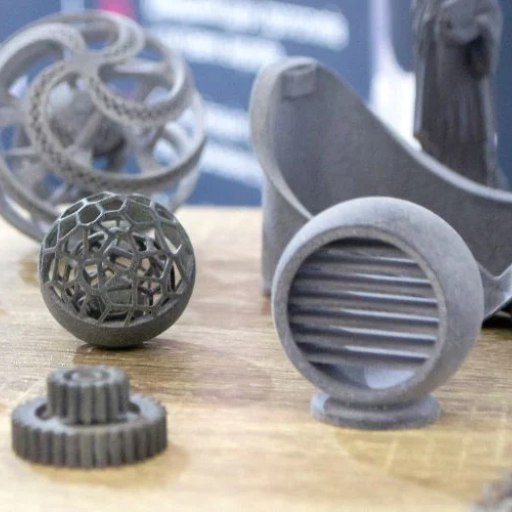
1、Advantages of TPE
- Flexibility and Elasticity: TPE combines the elasticity of rubber with the processing efficiency of plastics, making it versatile for a wide range of applications.
- Recyclability: Unlike traditional rubber, TPE can often be reprocessed and reused, contributing to sustainability efforts.
- Lightweight: TPE materials are generally lighter than traditional rubber, which is advantageous in applications where weight is critical.
- Chemical Resistance: Many TPE formulations resist oils, solvents, and other chemicals, enhancing performance in specialized environments.
- Ease of Manufacturing: TPE can be processed using standard thermoplastic methods like injection molding, reducing costs and improving production efficiency.
2、Disadvantages of TPE
- Lower Durability: TPE typically exhibits lower wear resistance and tensile strength compared to some traditional rubbers, limiting its use in extreme conditions.
- Temperature Sensitivity: It may not perform as well as vulcanized rubber in high-temperature environments, leading to material degradation or deformation.
- Higher Initial Costs: Some TPE grades are more expensive upfront than traditional rubber, which could impact cost-sensitive applications.
- Limited Load Bearing: TPE is unsuitable for applications with high mechanical strength or long-term static loads.
Advantages of Using TPE Material
The ready availability of thermoplastic elastomers (TPE) and their numerous benefits make them a preferred material for industries. One key benefit is processability and cost effectiveness, since TPE can be molded, extruded, or shaped using standard thermoplastic processing machinery. Moreover, the elasticity of rubber when blended with TPE increases the ease of processing, which inherently enhances versatility.
Additionally, TPE has strong chemical exposure protection, which includes oil, chemicals, and UV radiation, making it suitable for harsher applications. Moreover, their lightweight properties and customizable softness enhance adaptability for diverse products such as medical devices, automotive parts, and consumer products. TPE also surpasses traditional vulcanized rubber in sustainability, making their recycling capabilities aligned with environmental and regulatory pressure more beneficial.
Common Disadvantages of TPE
Certain limitations arise with thermoplastic elastomers (TPEs), a quite adaptable material. Whereas vulcanized rubbers have greater heat resistance (a characteristic of higher temperatures) than TPEs, TPEs have comparatively lower heat resistance. This restricts their use in high-temperature environments. TPEs also have lower chemical resistance, especially with oil, fuels, and certain solvents, making them less effective in industrial applications with constant exposure to harsh chemicals. In addition, TPEs have a higher price point when compared to other materials, which is detrimental to large-scale production. This is especially true for specialty grades designed for advanced applications, which impacts budgeting. Although TPEs are recyclable, they are not Thermoplastics; recycling can be significantly more difficult depending on the materials used to formulate TPEs. Moreover, TPEs tend to have lower mechanical strength under extreme loads when compared to vulcanized rubbers, which have enhanced durability in such conditions. Nevertheless, these factors restrict the use of thermal plastic elastomers, necessitating careful examination of conditions before identifying whether to use TPEs.
When Should You Choose Traditional Rubber?
The unmatched elasticity, durability, and resistance to extreme conditions of traditional rubber make it the material of choice for numerous applications. It is particularly well suited for natural and synthetic rubbers, such as neoprene or nitrile, for situations involving abrasive surfaces and chemical exposure at high temperatures. Components such as seals, gaskets, and tires are manufactured from traditional rubber, owing to its high tensile strength and ability to endure significant wear and tear, in the automotive, aerospace, and heavy machinery industries.
Moreover, if compliance with strict industry requirements like performance and safety in essential functions is paramount, traditional rubber retains an upper hand. Unlike many TPEs, traditional rubber often outperforms in specific thermal and chemical resistances. On the other hand, the sustainability of the material selection may be impacted because of the complex recycling processes to which traditional rubber is subjected. Thus, a thorough assessment of the operational environment, coupled with the performance requirements in the long run, is critical in deciding to use traditional rubber.
How Does the Manufacturing Process Differ Between TPE and Rubber?
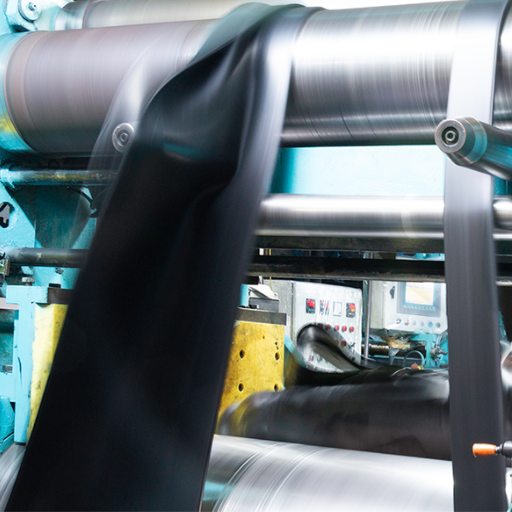
The key difference between TPE and conventional rubber lies in manufacturing and curing methods. Being thermoplastic, TPE is processed via injection molding, extrusion, and blow molding techniques. All these methods are relatively simple; further, the material can be melted and reshaped numerous times without significant chemical change.
Traditional rubber undergoes vulcanization, which adds sulfur or other curatives to form cross-links between the polymer chains, chemically transforming the rubber. Although this process turns rubber into a more elastic, durable, and thermo-resistant material, it is also thermoset and less recyclable than TPE. Therefore, TPE leads to shorter production cycles and better functional diversity than rubber, which excels in rigid strength and thermal stability.
Injection Molding with TPE
Thermoplastic elastomers (TPEs) enable highly efficient injection molding while offering flexibility and cost advantages. The vulcanization process leverages the thermoplastic nature of TPEs by repeatedly melting and solidifying the material, which leads to lower-cost waste during production. TPE compounds have excellent flow properties and can be manufactured into detailed part geometries while retaining smooth surfaces.
In terms of performance, Thermoplastic Elastomers (TPEs) offer remarkable flexibility, wear resistance, and compatibility with overmolding processes. These properties make them suitable for rigid plastic and soft-touch component combinations. Furthermore, low-temperature flexibility and high-impact strength make TPEs ideal for automotive, medical, and consumer goods applications.
In addition, the short cycle times and lower injection temperature controllability within the injection molding process increase production effectiveness. Further development of TPEs has also increased the range of properties, including but not limited to UV resistance, flame retardancy, and chemical resistance, showing their industrial versatility.
The Vulcanization Process of Traditional Rubber
Vulcanization is a chemical reaction that turns raw rubber into a more durable material. This is done by adding sulfur or other curing agents into the rubber under heat and pressure. Individual polymer chains are cross-linked during vulcanization, increasing a rubber’s mechanical properties like tensile strength, elasticity, and resistance to deformation and abrasion.
Improvements to the traditional vulcanization process have allowed almost all factors, like cross-linked density, to be better controlled, directly influencing rubber performance. For example, the invention of accelerators and activators decreased vulcanization times significantly. Automation and digital monitoring have increased precision control on temperature and curing times, decreasing final product variability.
This technique is vital for producing various parts, especially tough automotive tires or industrial seals. These applications need uncompromising performance and dependability. Organ peroxide vulcanization research progress aims to enhance environmental sustainability and broaden greener options and alternatives for this process.
Overmolding Techniques for Polymeric Materials
Overmolding allows a cohesive component to be created by integrating multiple polymeric materials. It is a particular and sophisticated manufacturing technique. The process begins with creating a base substrate, which is then covered in a different polymer through injection molding. This is particularly useful in the automotive and medical industry, plus consumer electronics, because it increases the product’s functionality while strategically placing adhesive polymers, improving thermal sensitivity while allowing visual appeal and better gripping.
It is essential to determine polymer adhesion, crosslinking density compatability, conditions, temperature, pressure, and time before the mold opens to release the product. When measuring these overmold parameters, it is crucial to first focus on the surface treatment of the supplement and overall mechanical strength. In addition to these factors, overmold peel strength is mastered with new two-shot and liquid-injection molding technologies.
New advancements in overmolding technologies are concentrating on sustainability efforts through biopolymers, thermoplastics, and advanced recycling techniques. Also, new developments in simulation software have allowed engineers to forecast and alleviate concerns that could lead to problems such as warping, weak bonding, and polymer degradation well ahead of extensive production. These innovations highlight the growing centrality of overmolding in various sectors to adapt to changing design and functionality requirements.
What Are the Environmental Impacts of TPE vs. Rubber?
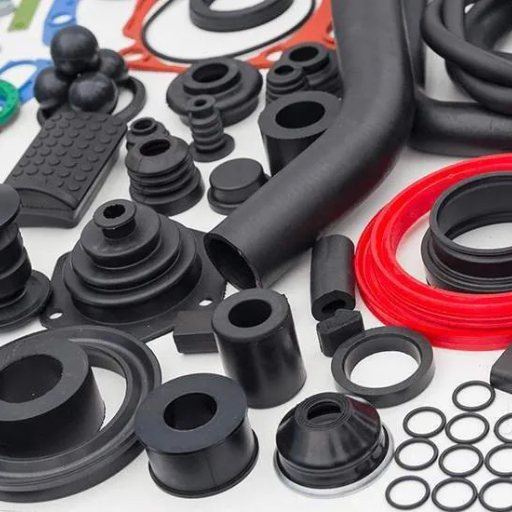
Significant differences exist in the environmental impacts of thermoplastic elastomers (TPEs) and rubber. Due to TPEs being recyclable, they are more sustainable, as they can be melted and reprocessed countless times. The case of rubber, especially natural rubber, is different as it has a complex environmental impact because of the enormous land and water consumption needed for growing it. Also, synthetic rubber is made from petroleum products, depleting fossil fuels, and increasing greenhouse gases. Furthermore, manufacturing rubber usually requires curing, which is an energy-intensive process. TPEs, on the other hand, are efficiently processed via molding and extrusion. For these reasons, TPEs are a more environmentally friendly product.
Recyclability of TPE vs. Traditional Rubber
Any thermoplastic elastomer (TPE) is more environmentally friendly than rubber, making recycling easier. The physical properties of TPEs are not significantly reduced even after repeated melting and reprocessing. This attribute helps decrease recycling processes, decrease waste, and preserve raw materials. Traditional rubber, such as vulcanized rubber, comes with more recycling challenges. Because of its crosslinked molecular structure, vulcanized rubber cannot be reformed, remelted, or reshaped. The recycling of traditional rubber often uses energy-intensive grinding or devulcanization, which is expensive and yields poor-quality recycled materials. TPEs supporting the circular economy model make them the number one choice for industries that perform multifunctional tasks without worrying about operational costs.
Environmental Considerations in TPE Production
Different elastomers of TPRs have unique environmental impacts that focus on their efficiency in using resources, energy, and emissions into the environment. Further development in the rubber industry has brought in the use of primary bio-based feedstocks from renewable resources like corn and sugarcane. Switching to these options lowers the dependence on patented fossil fuel components, which reduces the carbon emissions involved in making TPEs.
Also, optimized extrusion and injection molding processes have made producing TPEs with lower energy demand easier. Advancements in processing technologies have made this possible. These innovations also help reduce waste during production and support the industry’s goal of reducing greenhouse gas emissions. In addition, the post-industrial recycling of TPEs has become more popular, helping manufacturers reprocess surplus material back into production, minimizing waste, and conserving resources. Incorporating these changes helps meet the greater needs of the industry while evolving towards more environmentally sustainable practices.
Comparing the Life Cycle of TPE and Rubber
The lifecycle of thermoplastic elastomers (TPEs) differs significantly from that of traditional rubber in production, use, and post-consumer treatment. TPEs are made with thermoplastic polymers, leading to a simpler and faster process. This method starts with thermoplastic polymers, decreasing production time and energy compared to the rubber vulcanization process. The latter, essential for rubber manufacturing, involves the high-temperature addition of sulfur or other curatives, which is quite resource-intensive and borders on environmentally damaging because of greenhouse gas production.
Recyclability remains the most crucial difference between the two. Because of their thermoplastic nature, TPEs can be melted and reshaped numerous times, maintaining their properties and making them ideal for recycling. On the other hand, rubber—especially vulcanized rubber—is difficult to recycle due to its crosslinked structure, making repurposing require a far more complex, energy-intensive process like devulcanization.
From an emission standpoint, TPEs tend to have a lower carbon footprint throughout their lifecycle, particularly when products need to be redesigned or recycled. On the other hand, rubber’s mechanical properties, such as its higher resilience and permanent set retention, provide rubber with irreplaceable advantages in heavy-duty tires and industrial machinery. These fundamental differences underscore the need to analyze the application requirements and sustainability objectives when deciding between TPE and traditional rubber materials.
How Do TPE and Rubber Perform in Terms of Durability?
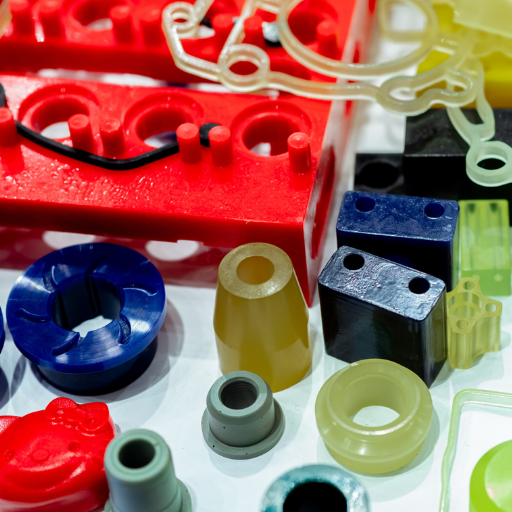
Both rubber and TPE are durable, but performance is application-dependent. TPEs are well-suited for outdoor and consumer products due to their ease of fabrication, low wear resistance, and UV stability. Moreover, rubber’s durability under high-stress conditions such as heavy-duty tires and industrial use is unmatched due to its exceptional tensile strength and abrasion resistance. While both materials offer substantial longevity, the choice is dictated by the environmental and mechanical parameters of the intended use.
Durability and Hardness of TPE
Thermoplastic elastomers (TPE) are made to withstand physical stress while being flexible, giving them utility in many industries. The hardness of TPE is measured using the Shore durometer scale, which ranges from an exceedingly soft 20A to a rigid 85D depending on the blend and formulation. TPE offers exceptional resistance to mechanical stress and fatigue, guaranteeing consistent performance throughout numerous loading and unloading cycles. Additionally, the remarkable temperature range it can withstand without degrading is typically between -40°C and 100°C, further increasing its applicability in harsh conditions. Recent advancements in TPE technology highlight improved chemical, oil, and weathering resistance, making it applicable for indoor and outdoor use. All these factors demonstrate its adaptability in product engineering, where dependable endurance and variable softness are primary demands.
Comparing the Tensile Strength of TPE vs. Rubber
Tensile strength, one of the most critical factors of material performance, is very different for thermoplastic elastomers (TPE) and conventional rubber. Considering TPE’s polymeric structure, pulling apart Elastomers is easier than pulling apart conventional or synthetic rubbers. Therefore, TPE has a lower tensile strength of 5 to 25 MPa, depending on formulation and conditions, whereas natural or synthetic rubbers range from 15-30 MPa, with high-performance grades surpassing 30 MPa.
Though rubber typically displays greater tensile strength when cured or vulcanized, TPE possesses benefits in consistent behavior under strain, especially at high heat or in chemically hostile conditions. Furthermore, TPE’s precision engineering capability allows for customized tensile properties, making it suitable for applications demanding specific performance criteria.
These differences are paramount in selecting materials as TPE may surpass rubber in cases where flexibility, low weight, or recyclability are prioritized, even with the comparatively lower tensile strength in default settings. Grasping these materials’ traits allows the engineers and designers to improve tailored product dependability and versatile adaptability for specific applications.
Heat Resistance and Chemical Resistance in TPE and Rubber
Every material has different behaviors when exposed to heat and chemicals, which are key factors when selecting a material for a specific application. Thermoplastic elastomers (TPE) have a lower upper temperature limit than rubber. Most TPE variants work up to around 120°C to 150°C, depending on the type and formulation. Silicone and EPDM rubber, for example, demonstrate exceptional heat resistance, often tolerating sustained exposure to around 150°C to 250°C for a long time.
These materials also differ significantly in chemical resistance. Compared to thermoplastic elastomers, silicone and nitrile rubber have stronger resistance to aggressive chemicals like oils, solvents, and acids. While TPE does offer moderate resistance to a range of chemicals, it may degrade with prolonged exposure to certain hydrocarbons or concentrated solutions. One advantageous characteristic of TPE is that it can be more easily formulated by adding specific additives to enhance tailored properties, such as resistance to specific chemical agents, while still retaining processing efficiency, flexibility, and the ability to be processed without complex procedures.
The difference in preferences highlights the need to align material selection with operational requirements and consider the performance and environmental factors for long-term reliability and functionality. These material profiles are sufficient for engineers and material scientists to provide solutions that comply with industry standards in the automotive, medical, and consumer goods manufacturing sectors.
What Types of Applications Benefit from TPE vs. Traditional Rubber?
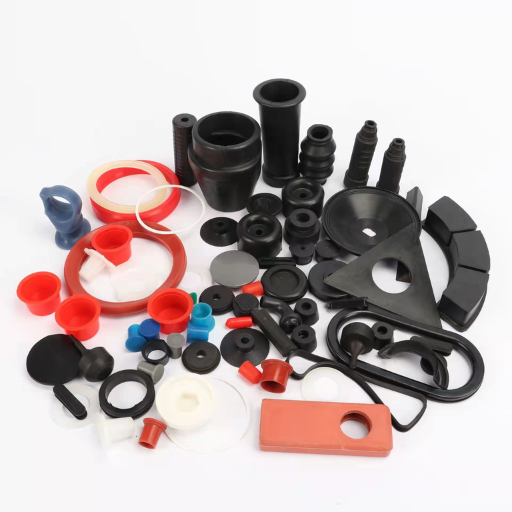
Due to their flexibility, low weight, and fast production cycles, thermoplastic elastomers (TPE) are the perfect candidates for such applications. In the medical device sector, for instance, components are required to be soft to the touch as well as sterile and biocompatible. Traditional rubber performs best in applications such as automotive tires and industrial gaskets, which require extreme temperature resistance, high durability under stress, and excellent sealing properties. The final decision between TPE and traditional rubber depends on the application’s design requirements and environmental conditions.
Usage in Automotive Parts: TPE vs. Rubber
TPE and conventional rubber are used widely in automobile parts, each fulfilling specific requirements based on the unique characteristics and demands of the material. TPEs are preferred for their low weight, ease of design, and ability to be recycled, which supports contemporary automotive industry initiatives like boosting fuel economy and eco-friendliness. TPEs are also used in soft-touch interior components, weather-strip seals, and flex boots because of their precise molding capabilities for complex geometry and their surface and structural durability.
On the other hand, traditional rubber is still the primary choice for components that demand high thermal stability, strong abrasion resistance, and durability under repetitive dynamic stress. Rubber’s intrinsic properties, such as high vibration damping and tearing strength, are advantageous for engine mounts, suspension bushings, and high-performance tires. These attributes provide dependable performance even in extreme conditions such as elevated temperatures, intense pressure, and harsh mechanical strain.
The latest developments in automotive materials have even more optimized TPE and rubber for automotive applications, enhancing their resistance to ultraviolet (UV) radiation and chemical exposure. There is a growing interest in hybrid approaches that integrate TPE and conventional rubber due to the lightweight properties of TPE and the mechanical strength of rubber to meet evolving industry standards and consumer expectations. Selecting between these materials requires thoroughly examining the part’s functional and environmental parameters to provide maximum efficiency, durability, and economy.
Medical Devices: Choosing Between TPE and Rubber
In the case of medical devices, choosing between thermoplastic elastomers (TPE) and traditional rubber strongly depends on the device’s specific performance and regulatory constraints. TPE’s versatility, including ease of processing, low weight, and potential for sterilization compatibility, offers no different advantage. Moreover, TPEs can be engineered to specific requirements such as softness, chemical resistance, and biocompatibility, making them ideal for tubing, seals, and soft-touch components.
Conversely, conventional rubber has better mechanical strength and elasticity and endures deformation for extended periods than other materials; hence, it is ideal for parts that are physically used and abused in extreme environmental conditions. Its application history with gaskets and diaphragms proves its dependability in crucial situations. On the other hand, processes that work with rubber, such as vulcanization, are usually more complicated and less recyclable than their TPE counterparts.
The choice between these materials must consider the need to adhere to government policies, especially in healthcare settings where bodies like the FDA or ISO 10993 impose regulations on material safety and performance aspects of the rubber used. By assessing the method of sterilization, patient safety, and product lifecycle, manufacturers can optimize the balance between multi-functionality while still keeping the product affordable.
Consumer Products: When to Use TPE or Rubber
Thermoplastic elastomers (TPE) and rubber each serve specific roles in the production of consumer products, depending on performance requirements, durability, and cost considerations. TPE is preferred for lightweight flexibility and recyclability applications, such as grips for tools, wearable straps, and household goods. It offers advantages in ease of processing, allowing for efficient production through methods like injection molding and extrusion. Additionally, its recycling ability makes it an increasingly popular choice for environmentally conscious manufacturers.
Conversely, rubber excels in applications demanding exceptional resilience, higher tensile strength, and long-term durability, such as automotive tires, heavy-duty seals, and industrial belts. Natural rubber, for example, delivers superior elasticity, while synthetic rubbers like nitrile or neoprene provide excellent resistance to chemicals, oils, and extreme temperatures. The selection of either material is further influenced by product lifecycle expectations, end-user comfort, and compliance with industry-specific regulatory standards, ensuring each material is leveraged in applications that perform most effectively.
Reference Sources
-
Thermoplastic Elastomers: Emerging Trends and Applications in Rubber Manufacturing:
- Key Findings: This study highlights the versatility of TPEs in various industries, including automotive, healthcare, and consumer products. It emphasizes TPEs’ sustainability, processability, and elasticity compared to traditional rubber. The research also discusses advancements in bio-based TPEs and their potential in additive manufacturing.
- Methodology: A comprehensive literature review was conducted, analyzing industry reports and research articles to evaluate TPE properties, applications, and emerging trends.
-
Waste Rubber Recycling: A Review on the Evolution and Properties of Thermoplastic Elastomers:
- Key Findings: This review focuses on recycling waste rubber into TPEs, addressing challenges like poor mechanical performance due to immiscibility. It explores compatibilization techniques and the use of recycled materials to enhance TPE properties, promoting sustainability.
- Methodology: The study reviews advancements in recycling methods, including devulcanization and surface modification, to improve the compatibility of rubber and thermoplastic blends.
- Top TPE Plastic Pellets Suppliers in China
Frequently Asked Questions
Q: What is a thermoplastic elastomer (TPE) and how does it differ from traditional rubber?
A: A thermoplastic elastomer (TPE) is a type of polymer material that combines the properties of rubber and plastic. Unlike traditional rubber, a thermoset material that cures and cannot be remolded, TPEs can be processed like plastics and reshaped multiple times. This flexibility makes TPEs suitable for a wide range of applications.
Q: What are the types of TPEs available in the market?
A: There are several types of TPEs, including styrenic block copolymers (SBC), thermoplastic polyurethanes (TPU), thermoplastic polyolefins (TPO), and thermoplastic rubber (TPR). Each type offers different material properties, such as elasticity and hardness, making them suitable for various applications.
Q: Can thermoplastic elastomers be recycled?
A: Yes, thermoplastic elastomers are recyclable. Unlike traditional thermoset rubber, TPEs can be melted and remolded, allowing for recycling and reducing environmental impact. This makes TPEs an eco-friendly choice for many applications.
Q: What are the advantages of using thermoplastic elastomers over traditional rubber materials?
A: TPEs offer several advantages over traditional rubber materials, including better processability, a wider range of hardness and softness options, and the ability to be recycled. Additionally, TPEs often provide enhanced durability and resistance to chemicals, making them ideal for various rubber parts and applications.
Q: How do TPEs perform in terms of elasticity compared to traditional rubber?
A: TPEs generally have excellent elasticity, comparable to traditional rubber. However, the specific elasticity can vary depending on the type of TPE used and its formulation. Many TPEs can achieve similar or even superior performance in terms of flexibility and recovery compared to traditional rubber materials.
Q: In which applications are thermoplastic elastomers commonly used?
A: Thermoplastic elastomers are used in various applications, including medical tubing, seals, gaskets, automotive components, and consumer products like floor mats and connectors. Their versatility allows them to replace traditional rubber in many scenarios.
Q: What should I consider when choosing between TPE and traditional rubber for my application?
A: When choosing between TPE and traditional rubber, consider factors like the required material properties (e.g., elasticity, durability), the processing method (TPEs can be processed like plastics), and the environmental impact (TPEs are often more recyclable). Assessing the specific requirements of your application will help you select the right material.
Q: Are there any limitations to using thermoplastic elastomers?
A: While TPEs have many advantages, they do have limitations. They may not perform as well as traditional rubber in high-temperature applications or where extreme chemical resistance is required. Evaluating the specific material properties of the TPE being considered is essential to ensure it meets your application’s demands.
Q: How do thermoplastic elastomers compare to silicone?
A: Thermoplastic elastomers (TPEs) and silicone have unique advantages. TPEs are more versatile and can be processed like plastics, while silicone offers superior temperature resistance and flexibility. The choice between TPE and silicone will depend on your application’s specific requirements, such as temperature range, elasticity, and processing capabilities.
Q: What are some common misconceptions about thermoplastic elastomers?
A: One common misconception is that TPEs are inferior to traditional rubber in performance. However, TPEs can provide comparable or even superior properties in many cases, including elasticity and durability. Additionally, their recyclability is often overlooked, making them a more sustainable option than traditional rubber materials.



